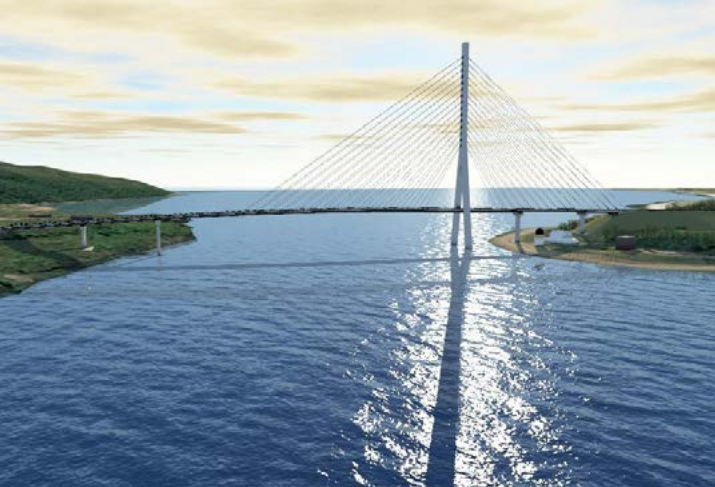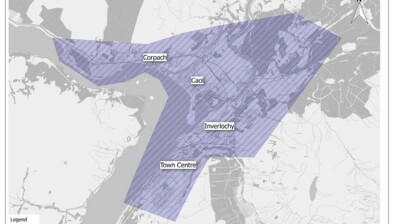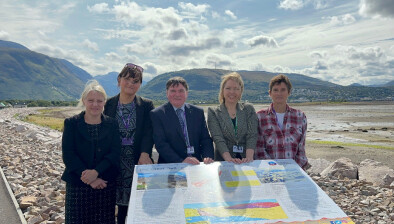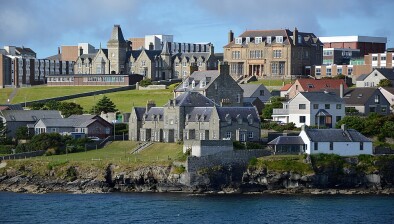Fixed link at Corran Narrows confirmed as viable option
A high level feasibility study into the construction of a bridge or tunnel across the Corran Narrows in West Lochaber has concluded that a fixed link is a viable proposition from an engineering, planning and economic perspective that deserves more detailed examination and costing.

A fixed link has been proposed to replace the long-established ferry service.
Regional transport partnership HITRANS, the Highland Council and Highlands & Islands Enterprise (HIE), who jointly funded the study, believe the crossing would dramatically improve connectivity between Nether Lochaber and Ardgour, on the Ardnamurchan Peninsula, and provide improved access to services and employment opportunities for those living in Ardnamurchan, Morvern and also Mull.
At the same time it would reduce travel time and remove the need for travellers to pay ferry charges.
HITRANS board members were told via video conference last week there are no ‘showstopper’ issues preventing the construction of a fixed link. Significantly, the costs of a fixed link are not out of step with a continued ferry service, particularly when set against the range of benefits of a fixed link.
In the study conducted by transport consultants Stantec, a total of 72 scenarios were examined including an option for a tunnel to the south of the ferry route; as well as routes for bridging the narrows. These were set against the costs of enhancing the existing ferry provision.
Three options for a fixed link remain on the table, namely the tunnel option; a bridge to be constructed along the existing ferry route and a bridge to be constructed along a central corridor, to the south of the ferry route.
Estimated construction costs of delivering this lifeline connection range from between £42 million - £50m for the lowest cost bridge option through to £66m - £108m for a tunnel option. These estimates are beyond the resources of the council, which runs the ferry service, and therefore Transport Scotland is to be approached to support the funding of the project, given its strategic importance to the Scottish economy and to meet the goals of the new National Transport Strategy.
In moving the project forward, the project partners believe there would be significant benefit in developing a single, umbrella Strategic Business Case considering the comparative merits of ferry and fixed link-based solutions. Project partners have shared the study with the team in Transport Scotland overseeing the Strategic Transport Projects Review for the Highlands and Islands area, highlighting the strong case for the proposal to be given all-inclusive consideration. In addition, the partners are planning to undertake further work to understand the business case including an assessment of the wider economic benefits which a fixed link may realise and hold a series of public engagement sessions.
Separately, the Highland Council is progressing an outline business case which is focused on the immediate transport problems associated with the ferry service to ensure short to medium-term sustainability. This involves cost modelling of a replacement ferry vessel and comparing what a retention or a transfer of responsibilities model will look like over a 30-year period. This is a separate piece of work that will have a degree of overlap and will help ensure that the ferry service is sustainable until such time as a fixed link is built.
Councillor Allan Henderson, chair of HITRANS and vice-convener of the Highland Council, said: “The Corran Ferry is the second busiest route in Scotland, providing a lifeline service to the remote communities of Ardnamurchan, Morvern and Mull. The current service, operated with an ageing vessel and limited crew numbers, is no longer sustainable as demand increases, so we need to consider the best option for upgrading the crossing of the Narrows.
“Doing nothing is not an option. I am very pleased that the feasibility study has demonstrated the viability of a fixed link, which will be a huge benefit to local residents - reducing their travel time and removing the need to pay significant ferry fares.
“From the estimated costs, it is clear that the council will need the Scottish Government to recognise this infrastructure as part of the delivery of the new National Transport Strategy that delivers for all communities in every part of Scotland and turn our hopes for a fixed link into reality. Residents can be assured we will all be pressing home our strong case for investment.”
Martin Johnson, interim director of strategy and regional economy at HIE, said: “New fixed links can offer the potential to open up rural areas to additional economic and employment opportunities, which in turn improve community resilience. It is important that these types of infrastructure interventions are considered carefully when identifying the most suitable long-term option for the Corran Narrows crossing.
“We very much welcome this report from Stantec. It provides focus for potential options going forward and will be extremely valuable in informing next steps.”
A copy of the full report and visualisations showing an example of one of the potential bridge options and the tunnel option for crossing the Corran Narrows can be found on the HITRANS website.














